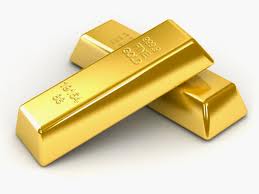Are Central Banks Moving Toward Gold as a Currency?
 For decades the dollar was underpinned by gold, and indirectly this meant that other world currencies were also pegged to the value of gold. The system that made this happen was the Bretton Woods Agreement signed on 22 July 1944. It was Bretton Woods that established the International Monetary Fund (IMF), and required each country that signed the agreement to adopt monetary policies that tied their currencies to the US dollar.
For decades the dollar was underpinned by gold, and indirectly this meant that other world currencies were also pegged to the value of gold. The system that made this happen was the Bretton Woods Agreement signed on 22 July 1944. It was Bretton Woods that established the International Monetary Fund (IMF), and required each country that signed the agreement to adopt monetary policies that tied their currencies to the US dollar.
In turn, the dollar was tied to gold, by the Gold Standard that had existed since 1900 (with the dollar convertible to 1.5 grams of gold). This gold standard was finally abolished in 1970, and from that time most currencies have freely floated against the dollar. But from the end of World War II to the early 1970’s, major currencies were indirectly tied to the value of gold by the adoption of Bretton Woods and the dollar’s tie to the Gold Standard.
There is now evidence that central banks are moving toward adopting gold either as a currency in its own right, or as a pseudo Gold Standard.
Central Banks have become large buyers of gold
In its April report, the IMF confirmed what the markets had suspected: central banks had returned to the market and had started been acquiring gold in large quantities. In September 2011, Argentina bought around 7 tonnes of gold, its first purchase for over seven years.
In March 2012, Mexico bought 17 tonnes of gold, adding to the 100 tonnes it is estimated to have bought in 2011. In fact 2011 saw over 500 tonnes of the yellow metal added to central bank balance sheets, including those of South Korea, Thailand, Philippines, Russia, and China.
Russia added a further 16.5 tonnes in March, too.
Smaller countries such as Colombia, Belarus, and Kazakhstan are also upping their reserves.
The IMF report stated it estimated that 16% of the world’s gold reserves are held in the vaults of 110 central banks.
Why would banks be buying gold?
Gold is seen as a store of value by investors. In tough economic and political times, gold increases in value.
The US last year had to raise its debt ceiling to $14.3 trillion. And this was so that it could maintain its federal spending. If it hadn’t done so, public spending would have halted, the US economy been crippled. Since, though the US authorities have tried to limit its budget, spending has continued to grow. Could it be that international governments, and their central banks, are now banking on dollar devaluation, either as a way of decreasing debt or because of an impending inability to service that debt and get it under control?
For evidence of what can happen to a currency in an economy crippled by debt, one needs to look no further than Europe. The Eurozone of 17 countries that adopted the Euro as the single currency has been under increasing pressure from sovereign debt piling up. Already, Ireland, Greece, Spain, Cyprus, and Portugal have received bailout funds to stop them from default on debt, and Spain’s banking system has received €100 billion to stop it from grinding to a halt. Italy is on its knees and likely to require massive funding in the form of a bailout, France is considered not too far behind, and the region is buckling under austerity measures that are cutting the growth that is needed to pay off its debts. The net result for the Euro has been a near 20% decline in value against the US dollar over the last 12 months.
If the same happened to the dollar, then the value of international holdings of US government bonds would crumble. A natural move by central banks, therefore, is to buy gold to protect themselves from dollar devaluation.
But isn’t gold a risky investment?
Well, all investments carry risk, that’s true. But some investments are riskier than others. For example, cash is considered to be zero risk, whereas equities carry a high risk. But if gold is considered as a risk on balance sheets, then it can hardly be used as a currency, can it? And this is where the final piece of the puzzle
The Basel Committee on Banking Supervision, an international banking regulatory agency, earlier this year published a draft list of standards with regards to margin requirements. Its aim is to impose rules that will stop the 2008 financial crisis repeating. Central to its proposals was the addition of gold to the list of acceptable collateral for trading in the derivatives markets, as a zero risk asset.
On the back of this change of rating, America’s Federal Deposit Insurance Corporation has proposed that gold be considered zero risk on bank balance sheets, upgraded from the current 50% risk rating.
So what does this mean for gold?
The re-rating of gold to zero risk will effectively place it on a level footing with currencies. In other words, it will be seen in the same light as cold hard cash. When that happens, the world could see currencies look to be pegged to gold once more in efforts to limit the harm done by a dollar under increasing pressure.